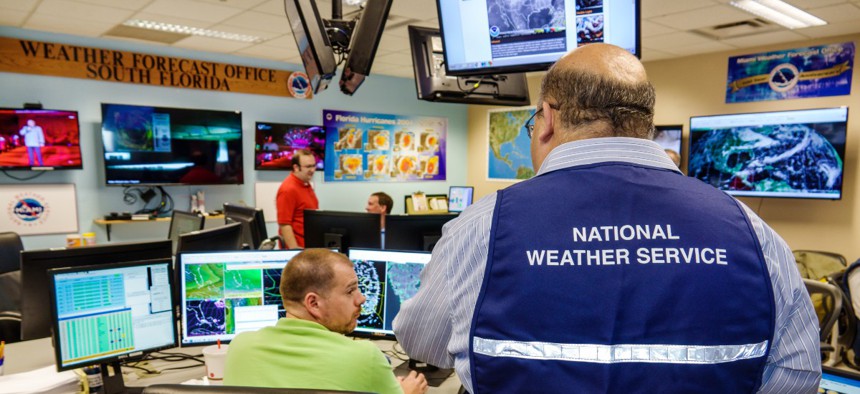New Supercomputers Take Over NOAA’s Weather Forecast Models

Jeffrey Greenberg/Universal Images Group via Getty Images
The twin supercomputers, developed and operated by General Dynamics Information Technology, are among the 50 fastest supercomputers in the world.
On Tuesday, the National Oceanic and Atmospheric Administration’s National Weather Service began running its U.S. weather forecast models on twin supercomputers architected, deployed and operated by General Dynamics Information Technology.
The twin HPE Cray supercomputers—Dogwood, located in Virginia, and Cactus, located in Arizona—operate at a speed of 12.1 petaflops and provide approximately three times the computing capacity for advanced weather monitoring than the previous supercomputers that comprised NOAA’s Weather and Climate Operational Supercomputing System program. Both supercomputers are entirely dedicated to weather modeling, are among the 50 fastest in the world and are identical to ensure rapid failover if the production role has to move from one site to the other.
“These supercomputers are a game-changer for NOAA," said Ken Graham, director of NOAA's National Weather Service, in an announcement. “With enhanced computing and storage capacity, we can deploy higher-resolution models to better capture small-scale features like severe thunderstorms, more realistic model physics to better capture the formation of clouds, precipitation and a larger number of individual model simulations to better quantify model certainty. The end result is even better forecasts and warnings."
NOAA first announced the GDIT-developed supercomputers in a February 2020 contract award. The supercomputers beef up NOAA’s computing capacity, storage space and speed, providing forecasters and meteorologists nationwide better models, more realistic model physics and simulations from which to predict track weather systems. The system will ingest billions of data points per day—and as much as 35 terabytes of data per day, according to GDIT officials—from ground sensors, ocean buoys, weather balloons and weather satellites.
“Timely and accurate weather forecasts protect every American citizen, every segment of the economy and play an increasingly important role in emergency preparedness and response to severe weather events,” said Kevin Connell, GDIT vice president and general manager for Science and Engineering. “With triple the computing capacity of NOAA’s current system, GDIT’s WCOSS supercomputers will enable future upgrades to the National Weather Service's models that are essential for accurate and timely forecasts and warnings, to protect life and property and enhance the American economy. We are proud to support NOAA on this mission-critical program.”
The supercomputers also will enable NOAA to upgrade its U.S. Global Forecast System in the fall and the launch of the Hurricane Analysis and Forecast System, a new hurricane forecast model expected to go live in 2023.
NEXT STORY: The Day I Became Too Old for the Internet






